Have you ever imagined traveling to New Zealand? Exploring every corner while driving a caravan? Hopping from one island to another and uncovering a new adventure at every turn? With its majestic mountains, crystal-clear lakes, deserted beaches, cosmopolitan cities, and cinematic landscapes, New Zealand is a country like no other. This place has it all!
New Zealand is a land to discover and an adventure to experience—a must-see destination for explorers and hiking enthusiasts, but also a fantastic country for the whole family. Join me in this guide and explore all the incredible places this unique country has to offer.
Stay until the end and uncover the best tips to make the most of your journey, all from someone who spent two years living in this beautiful country. So, pack your backpack, and… let’s go!
First things first: to enter New Zealand, you’ll need a visa. Take note because this part is essential—having issues with immigration is the last thing you want. There are several visa options for entering New Zealand, but the one we’re interested in is the Waiver Visitor Visa.
The first step is to apply online for the NZeTA. This electronic visa allows you to enter the country. Once you have it, you can apply for the Waiver Visitor Visa upon arrival at the airport. To do this, you’ll need to prove that your visit is for tourism purposes (hotel reservations, a New Zealand tour itinerary, or booked activities), that you have sufficient funds to support yourself while in the country, and a return flight to your home country.
The topic of flights is crucial. There are two main routes to New Zealand: via Asia or via America. The route through Asia is the most common and affordable, although when I traveled, I found an exceptionally cheap flight via Los Angeles.
It’s also important to consider which airport you’ll land at, as this will influence your travel plans. Before booking, make sure your New Zealand itinerary is well-organized. If you’re only exploring the North Island, aim to land in Auckland.
If you’re focusing solely on the South Island, Queenstown or Christchurch will be your main options. If you plan to explore all of New Zealand, the choice of arrival airport matters less, but I’d still recommend Auckland as your starting point.
Feeling overwhelmed already? Don’t worry! By the end of this guide, everything will be clear.
Even though New Zealand is a very safe country with no tropical diseases, purchasing travel insurance is highly recommended. The cost of living is high, and healthcare isn’t public. Shit happens, and the last thing you want is to be caught unprepared.
Keep in mind that even a basic doctor’s visit can cost over €30. Better safe than sorry, right?
It goes without saying how important it is to travel to New Zealand with a good insurance. We were the first ones to offer the famous 5% discount on IATI Insurance, but you also have it available with Heymondo Travel Insurance.
Follow the links below to get a discount on their website:
Access to the internet is essential for navigating New Zealand and using MetService, the country’s weather service. Staying updated on the weather is crucial to avoid potential issues.
Here’s how to get a New Zealand eSIM card with internet at affordable prices. Alternatively, you can opt for a New Zealand eSIM with unlimited data, which is now available.
Planning a trip to New Zealand is no small task and deciding when to go is one of the most important questions. The weather varies significantly between the two islands: the North Island has more stable conditions, while the South Island is known for its unpredictability.
The best season to visit New Zealand depends on your preference for snow or sun. Don’t worry; we’ve prepared an in-depth article about New Zealand’s weather to help you decide.
If you’re planning to travel to New Zealand, you will use the New Zealand Dollars (NZD). The currency includes coins, alongside banknotes. Credit and debit cards are widely accepted in New Zealand, and contactless payments are very popular.
ATMs are readily available in towns and cities, but it’s a good idea to carry some cash for rural areas or smaller establishments.
Auckland is New Zealand’s largest city, a cosmopolitan hub filled with skyscrapers and anchored by the iconic Sky Tower at its center. Nestled among small volcanoes, this ever-growing city is home to more than one million people.
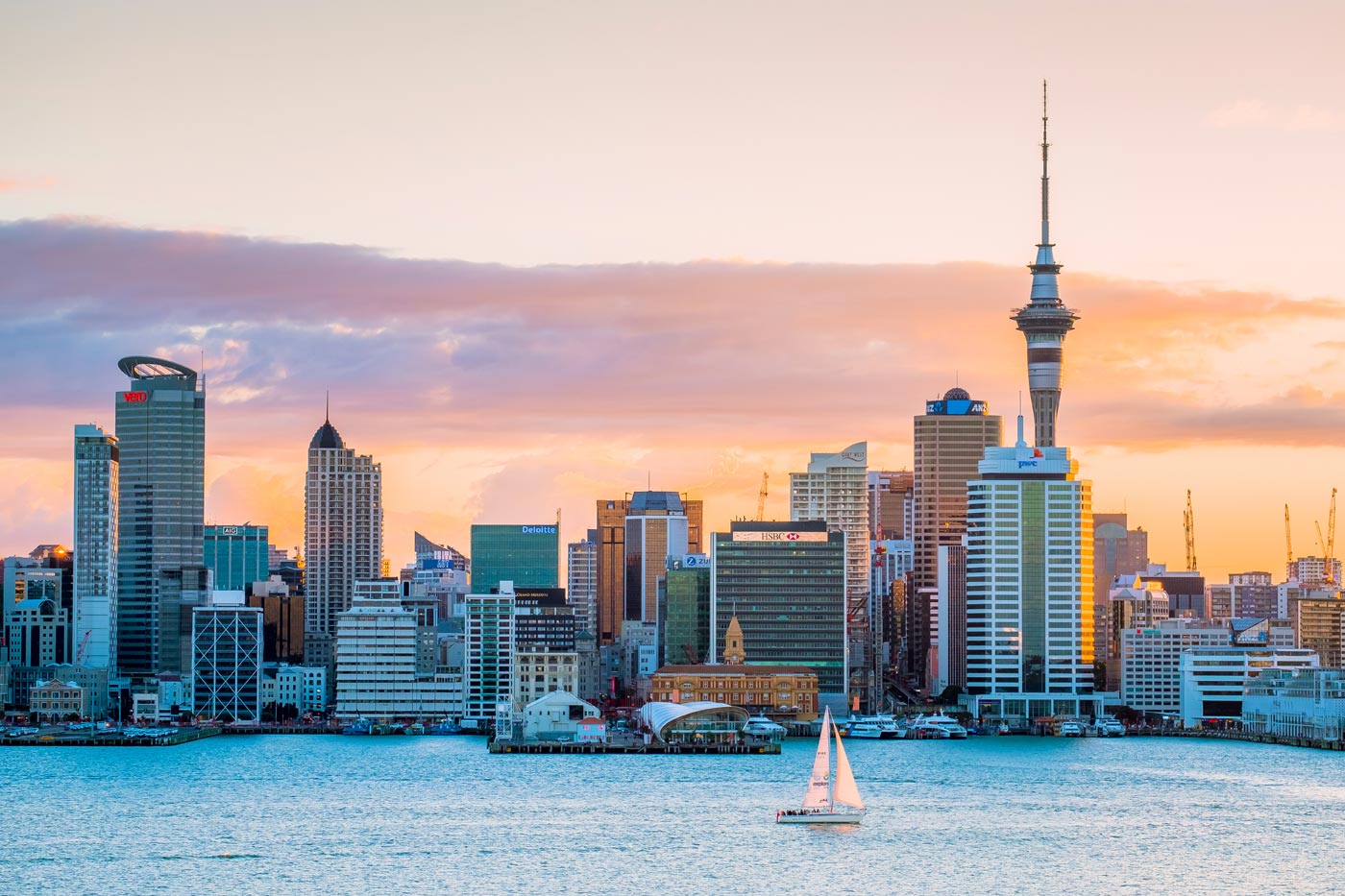
This city holds a special place in my heart—I lived here for about a year. Wandering through the charming harbor neighborhoods, enjoying magical nights on K Road, or strolling through its vast parks were my favorite pastimes. Beyond the urban attractions, you can hop on a bus to nearby Piha to relax on its serene beach.
Northland is famous for its secluded beaches, lush green meadows, and tranquil landscapes. With stable temperatures year-round, the inviting waters are perfect for a swim. In winter, it becomes a haven for backpackers escaping the colder southern climates—ideal if you’re one of them!
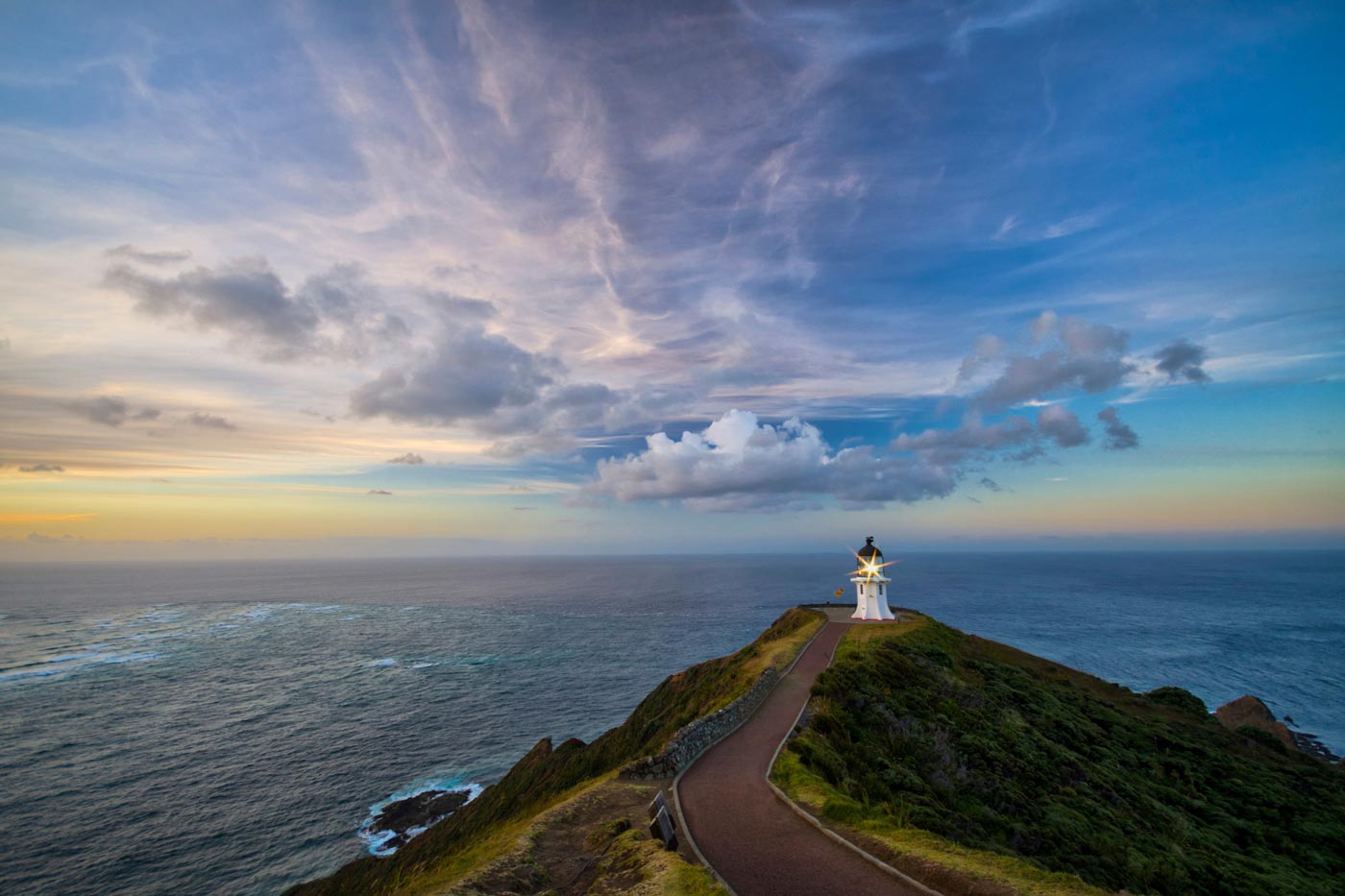
For those seeking a quieter side of New Zealand, Northland is the perfect destination. Don’t miss Cape Reinga or the giant sand dunes, where you can tumble down to your heart’s content. Kayaking along the coast is also a must, and with a bit of luck, you might even spot dolphins.
Coromandel is the polar opposite of Auckland. Transitioning from the buzz of a big city to being completely immersed in nature, this peninsula deserves at least three days of your itinerary. Whether you’re hiking along rugged trails, kayaking near the famous “Cathedral Cove” (you’ll soon see why it’s called that), or simply relaxing on its pristine beaches, time will fly by.
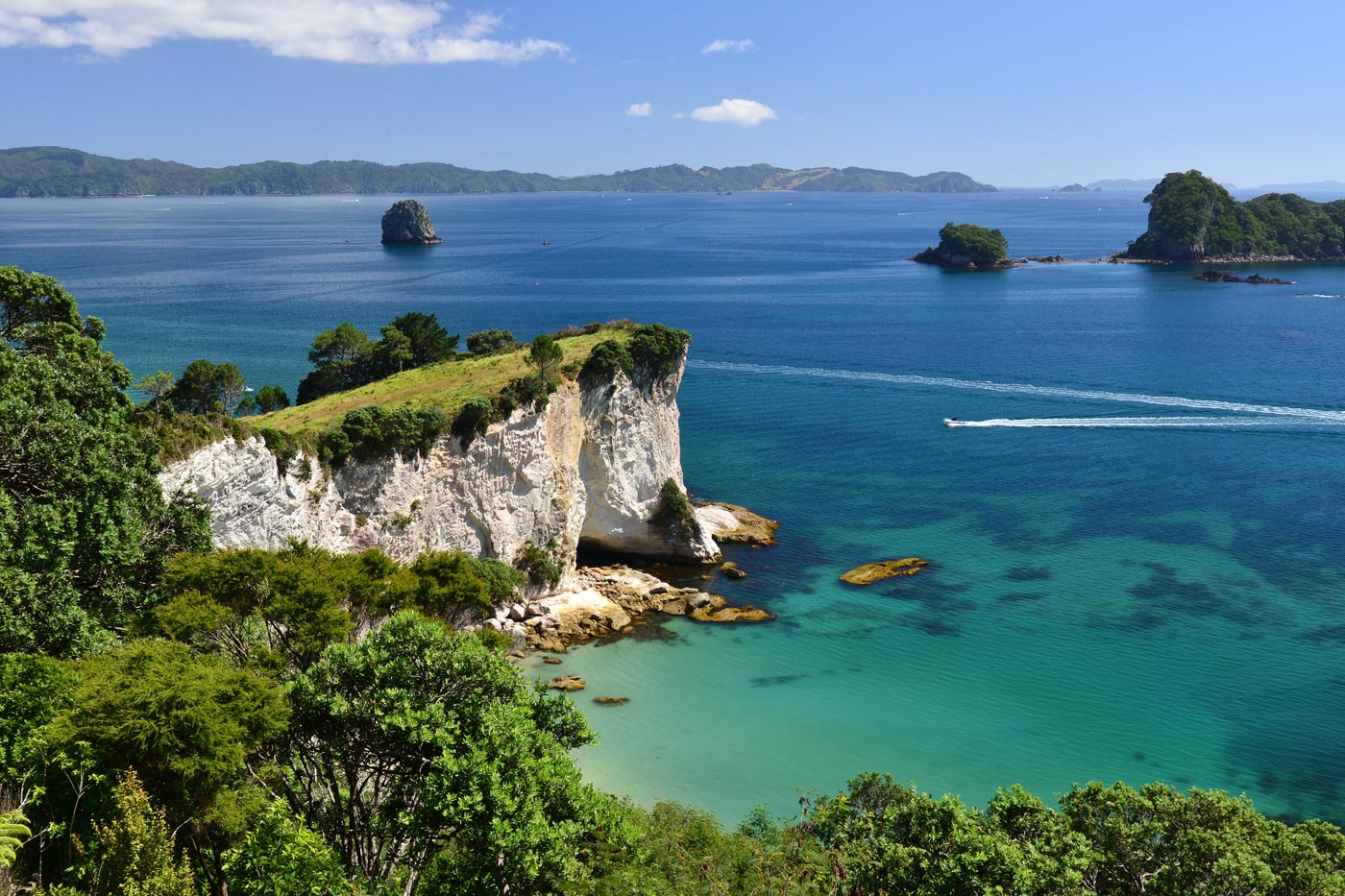
From here, Hobbiton could be your next stop, especially if you’re a fan of The Lord of the Rings. Alternatively, you might prefer a detour to visit the famous Mount Maunganui. However, keep in mind that Mount Maunganui is slightly off-route, so it depends on your interest in scenic rock formations.
Tongariro boasts some of the most dramatic scenery in New Zealand. As the country’s oldest national park, it is a place brimming with energy, thanks to its still-active volcanoes. The Ngauruhoe, whose name translates from Maori as “throwing hot rocks,” gives you an idea of the park’s raw power. By the way, this park is sacred to Maori culture, so be sure to stay within the designated paths at all times.
Here, you can hike among the volcanoes. The Tongariro Alpine Crossing is the most famous trail. If you’re up for the challenge, you’ll encounter an otherworldly landscape with striking blue lakes and the imposing Mount Ruapehu always in view.
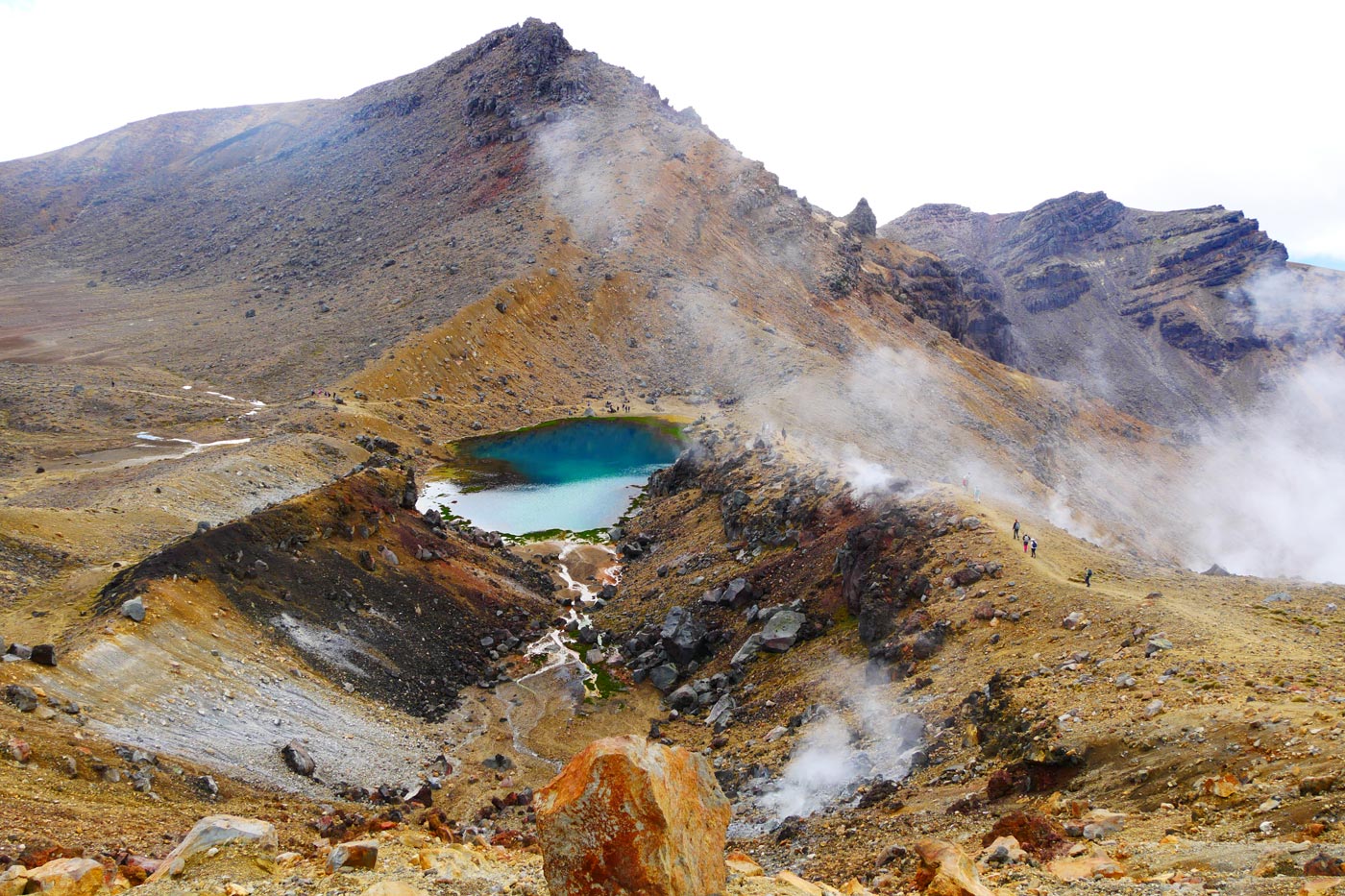
However, it’s not all perfect. Due to its popularity, the trail can get very crowded, and tours often sell out or become more expensive, especially during peak season. To avoid disappointment, make sure to book your spot in advance.
Located near Tongariro National Park, Whanganui National Park offers a completely different perspective of New Zealand. Transitioning from barren volcanic landscapes to one of the country’s most pristine jungles, this park is teeming with life.
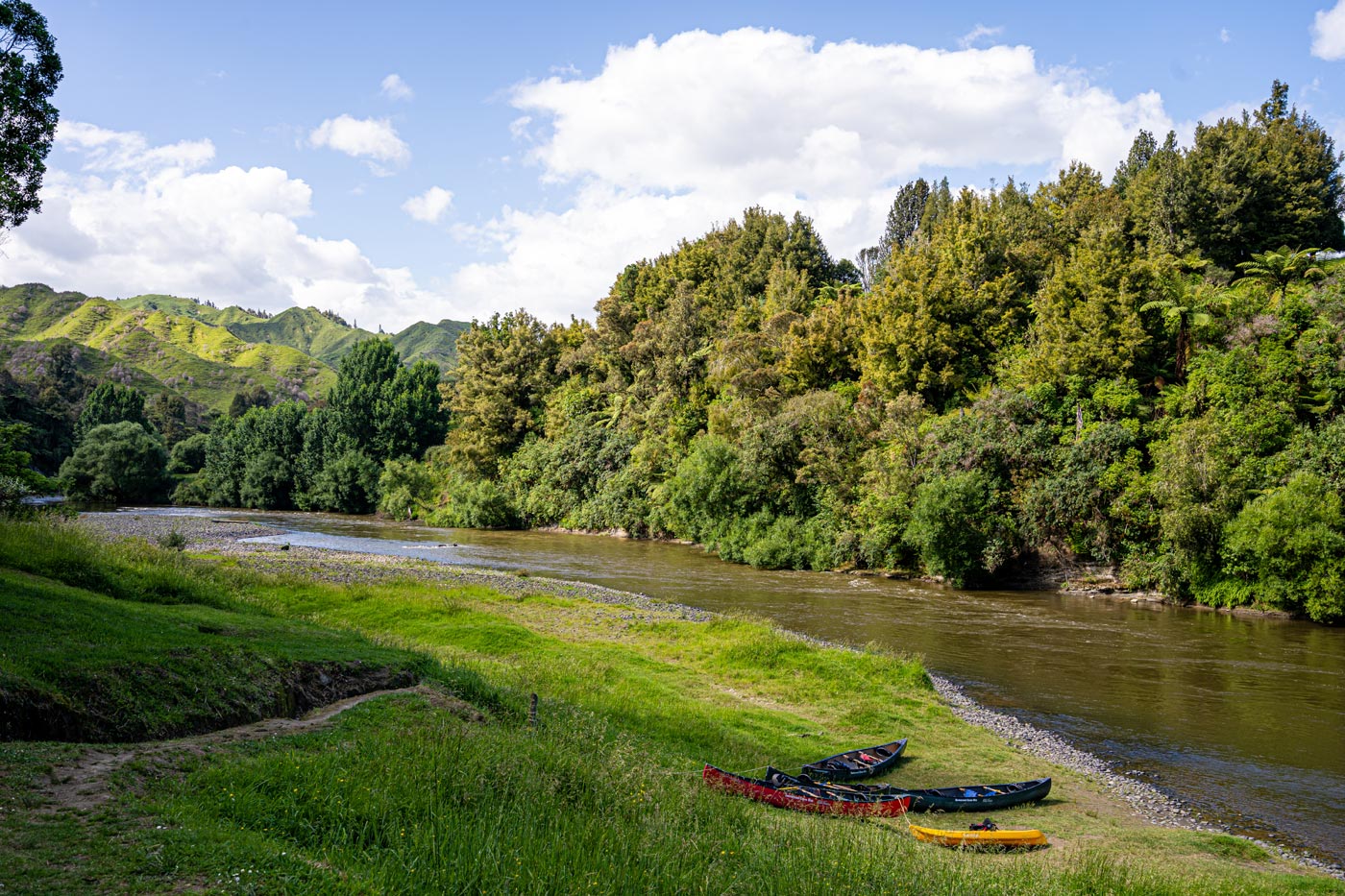
The best way to explore it? Believe it or not—by canoe! The Whanganui River, which runs through the heart of the park, is the ideal route for enjoying the native forest while minimizing your environmental footprint.
Alternatively, you can opt for motorized boats that traverse in a few hours what would take days by canoe. While faster and noisier, I find this option less enjoyable than paddling at your own pace. But as always, the choice is yours!
On the west coast of the North Island, Mount Taranaki stands as a solitary, majestic volcano dominating the landscape. Its presence is captivating from the very first glance.
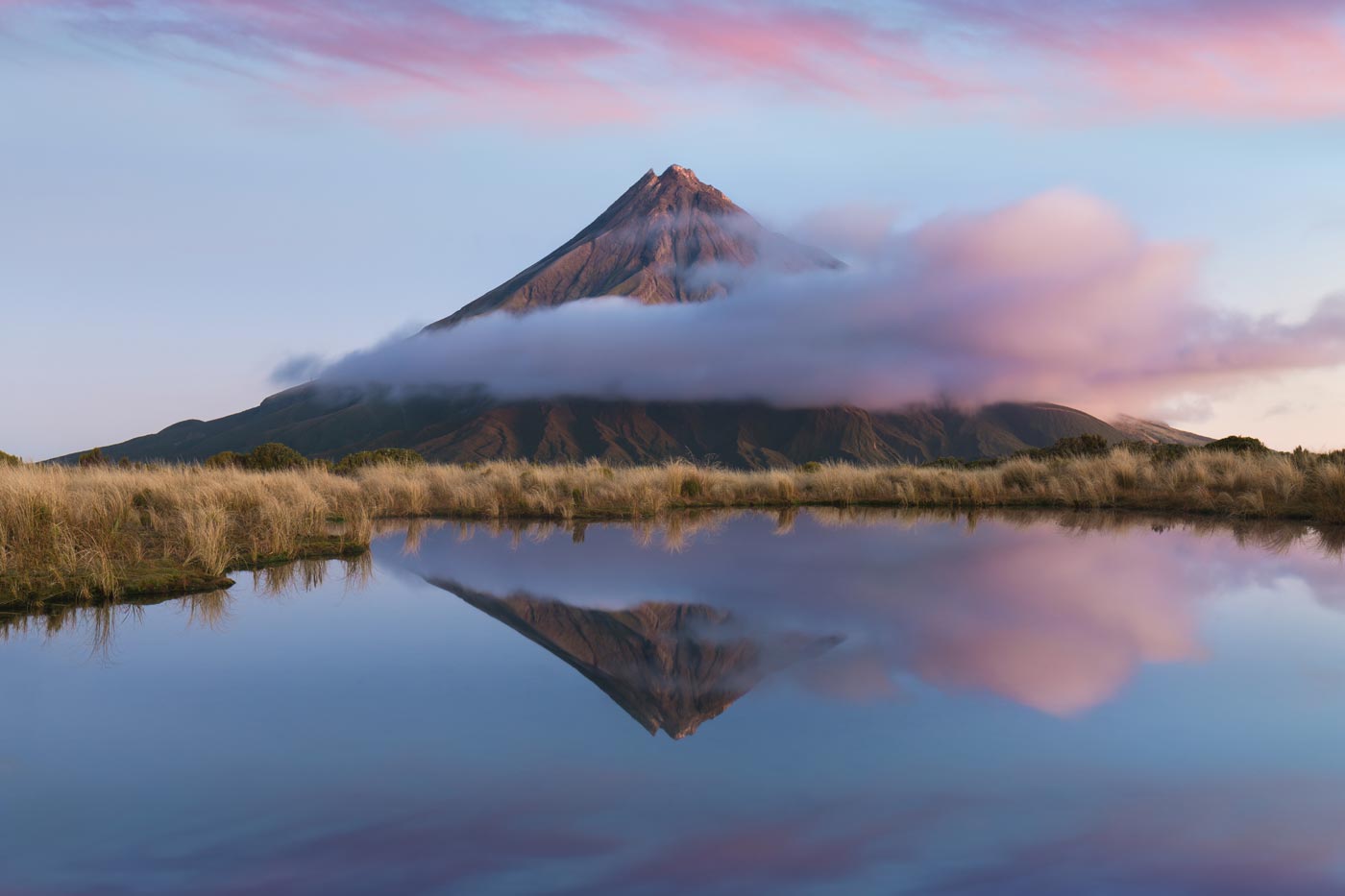
You can explore the coast, enjoying the dramatic contrast between sky and sea, or, if conditions permit, climb to the summit for unparalleled views of the North Island spread out before you. Be sure to stop by the small Pouakai Tarn, where you can capture a breathtaking reflection of the mountain in the water.
Wellington, the capital of New Zealand, is the country’s cultural hub and the gateway to the South Island. Stroll through its vibrant streets, relax in its parks, or immerse yourself in its museums. It’s the perfect city to delve into New Zealand’s national culture.
My favorite spot? The National Museum, which is highly interactive and perfect for visitors of all ages.
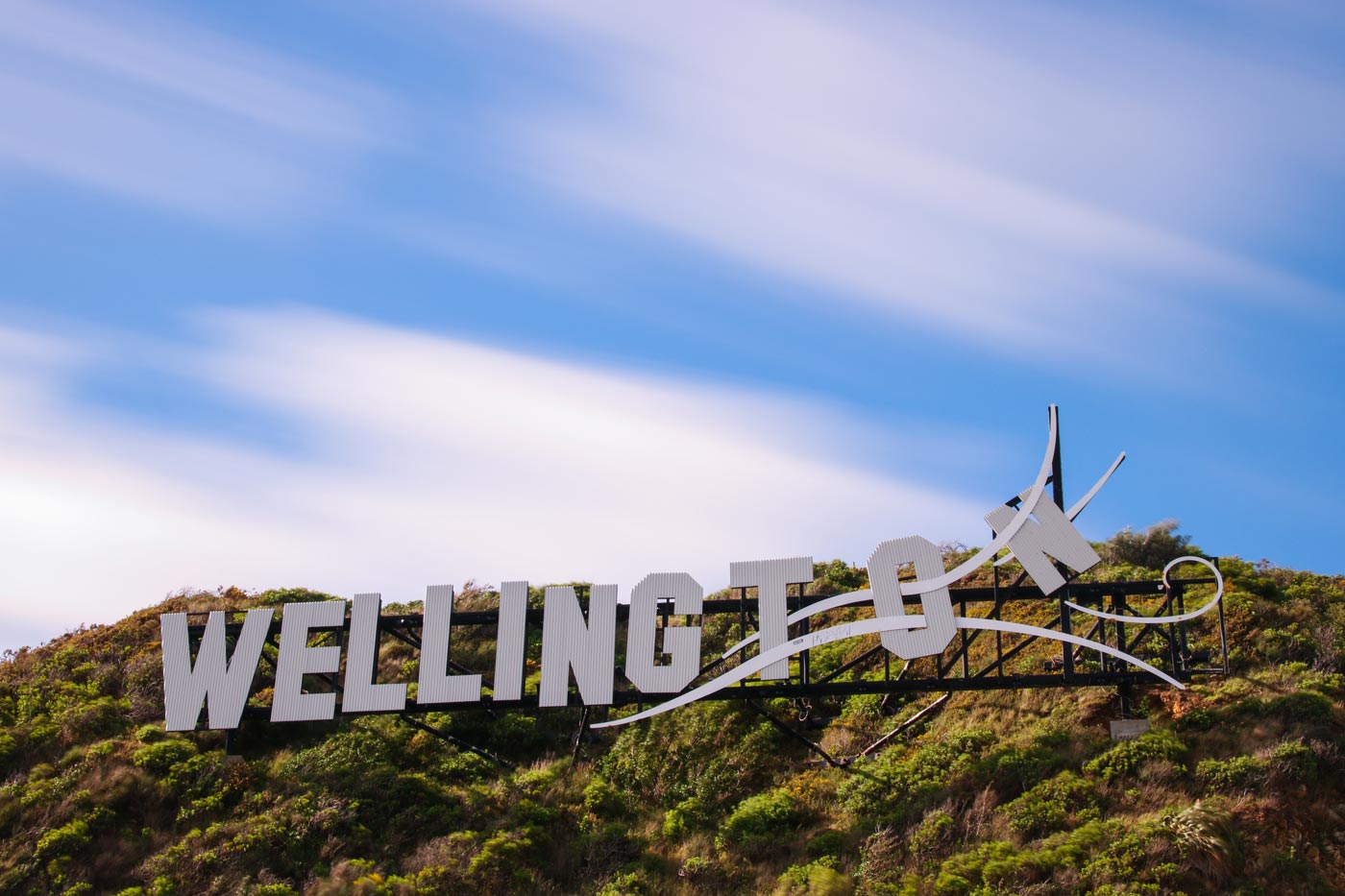
Don’t miss the nearby attractions, either. Places like Pataka and Belmont Regional Park are easy day trips from Wellington. Just be prepared for the wind, which will accompany you for much of your stay—especially if you’re visiting in winter! Wrap up warm!
Rotorua, a small town in the center of the North Island, sits beside a lake of the same name. At first glance, it might seem overshadowed by nearby Lake Taupo or Tongariro National Park, but it’s actually one of the most visited destinations in the entire country.
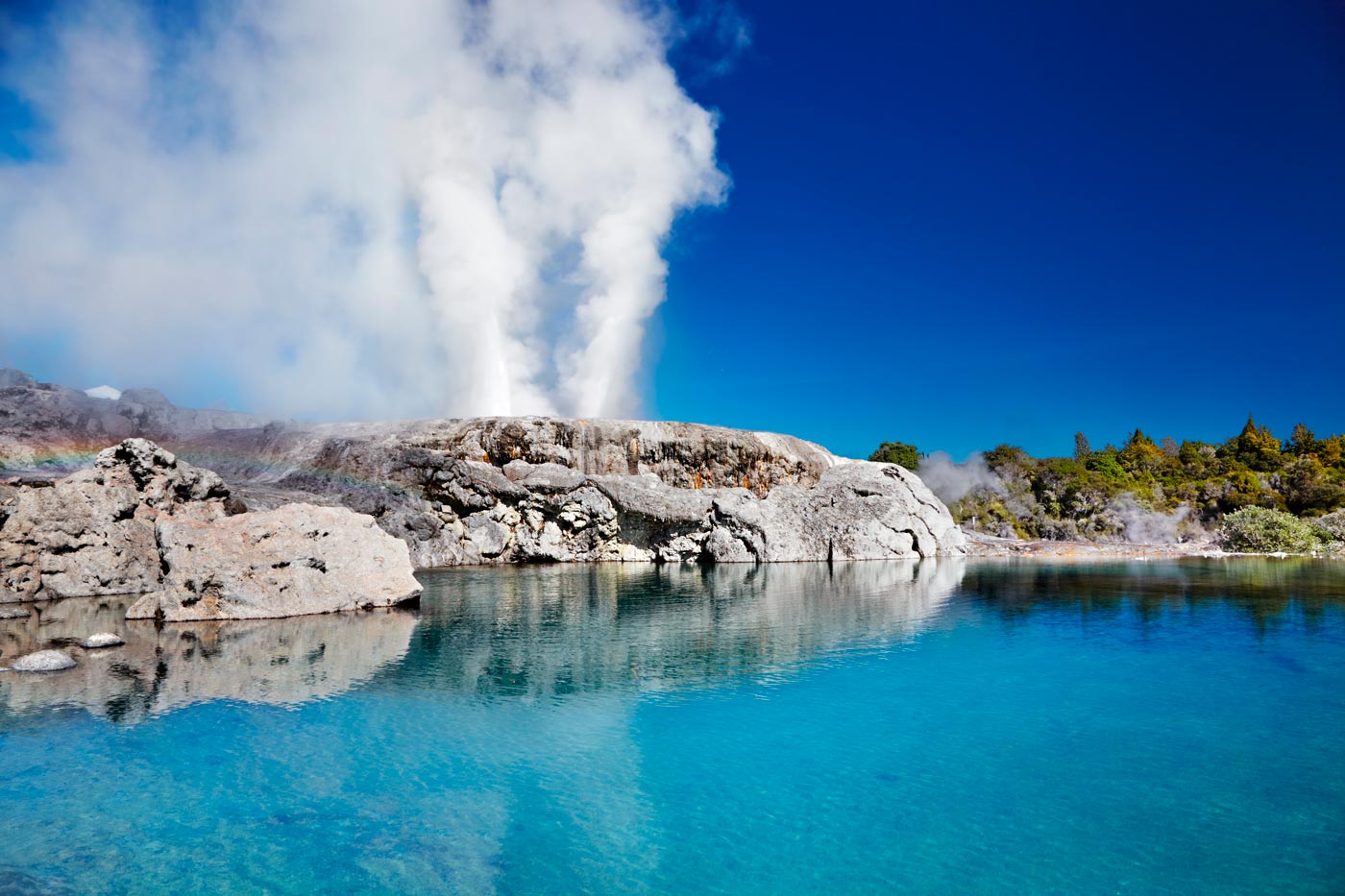
Why? The geothermal activity here, with hot springs, geysers, and volcanic landscapes, creates an enchanting and sacred atmosphere.
The best part? Many of the attractions are easily accessible from the town itself. Walking to geothermal parks or multicolored lakes directly from the city is an experience that’s hard to beat.
Christchurch is not the same city it used to be. After the devastating earthquake of 2011, it lost some of its charm. However, it is steadily being rebuilt and modernized. Street art thrives on every corner, and the central library is an ideal place to spend a few relaxing hours. Considered the capital of the South Island, Christchurch has everything you need to kick off your journey.
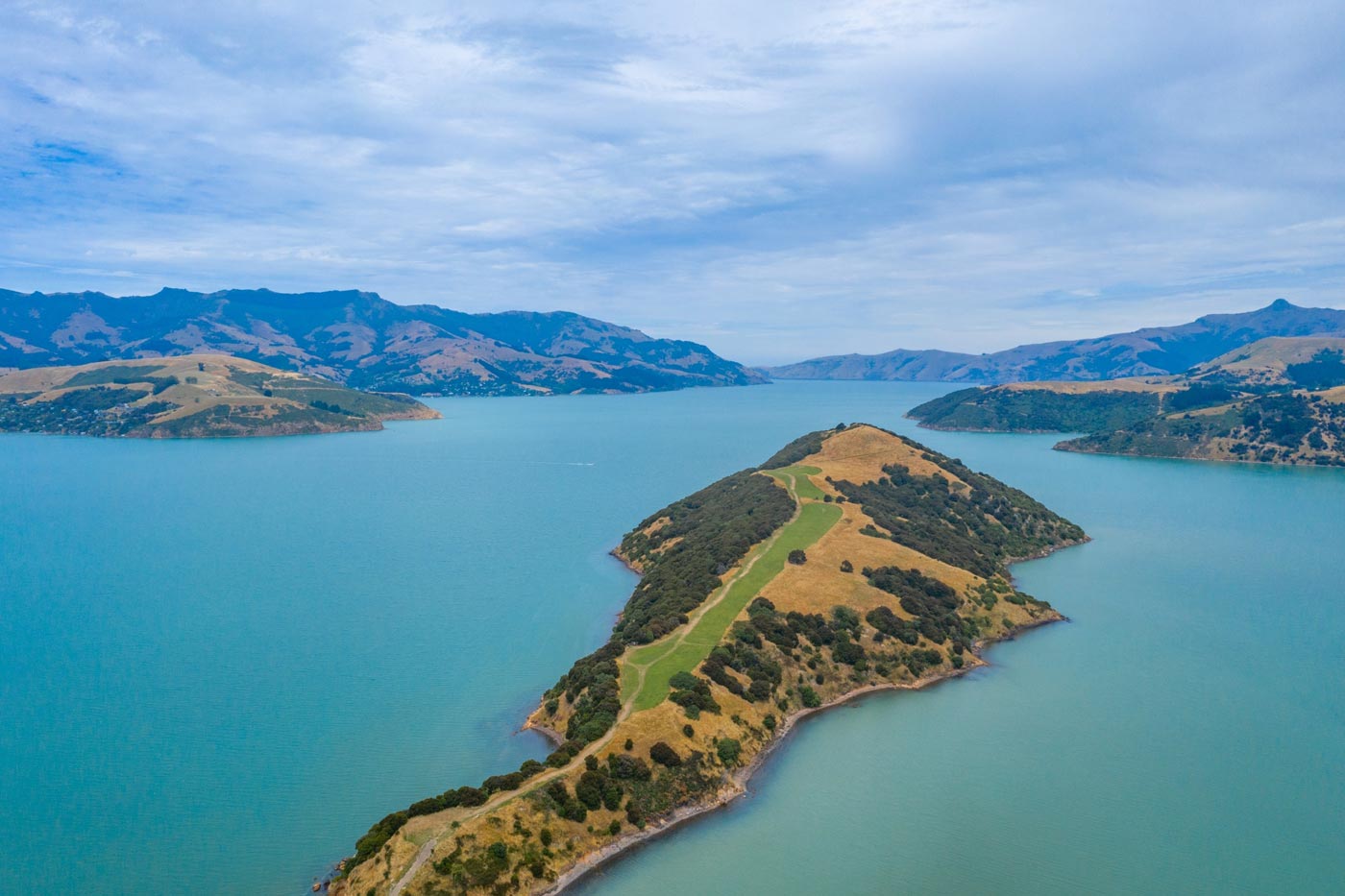
From Christchurch, you can head to the rocky Lyttelton area and enjoy its traditional Saturday market. Another must-see is the Onawe Peninsula, where you can explore stunning landscapes or even surf on one of its sunny beaches.
Marlborough Sounds is the perfect blend of sea, mountains, and jungle. This was my first stop on the South Island, and it did not disappoint. I embarked on a 5-day hiking adventure, camping in the heart of nature.
While the Queen Charlotte Track can be completed in 3 or 4 days, I loved it so much that I decided to take my time.
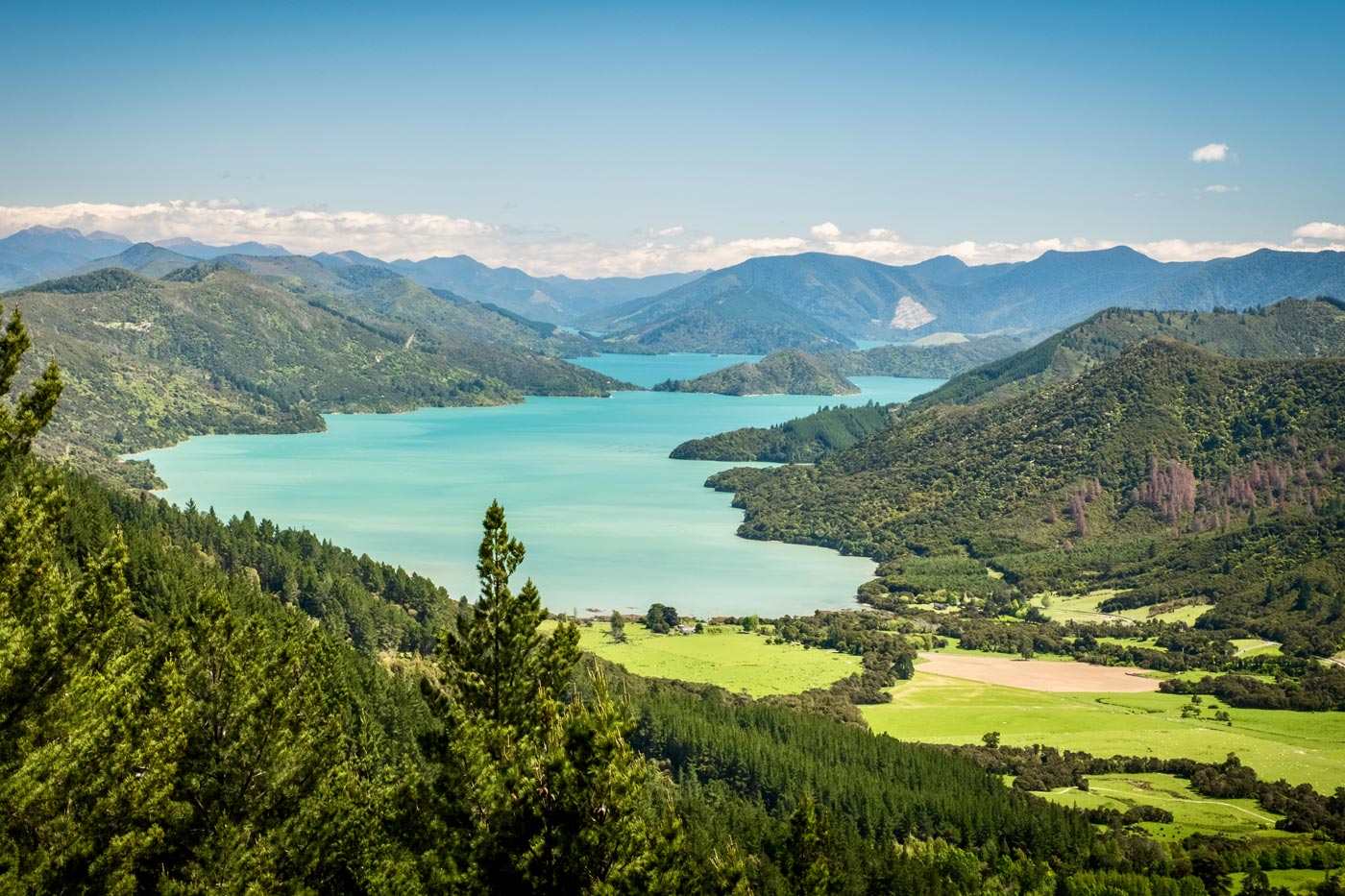
This destination draws all kinds of travelers with its easy hiking trails and unforgettable boat rides. You can spend just a day here or immerse yourself in its wonders for a week. One regret I have is not visiting French Pass due to bad weather. Don’t make the same mistake! Plan your time carefully.
Nelson Tasman, the geographical center of New Zealand, is a magical place where sea, mountains, and jungle converge. For me, it felt like stepping into another world full of wonders.
A visit to the eight crystal-clear springs of Te Waikoropupū Springs is an absolute must, as is exploring the golden beaches of Abel Tasman National Park and the stunning formations of Rawhiti Cave.
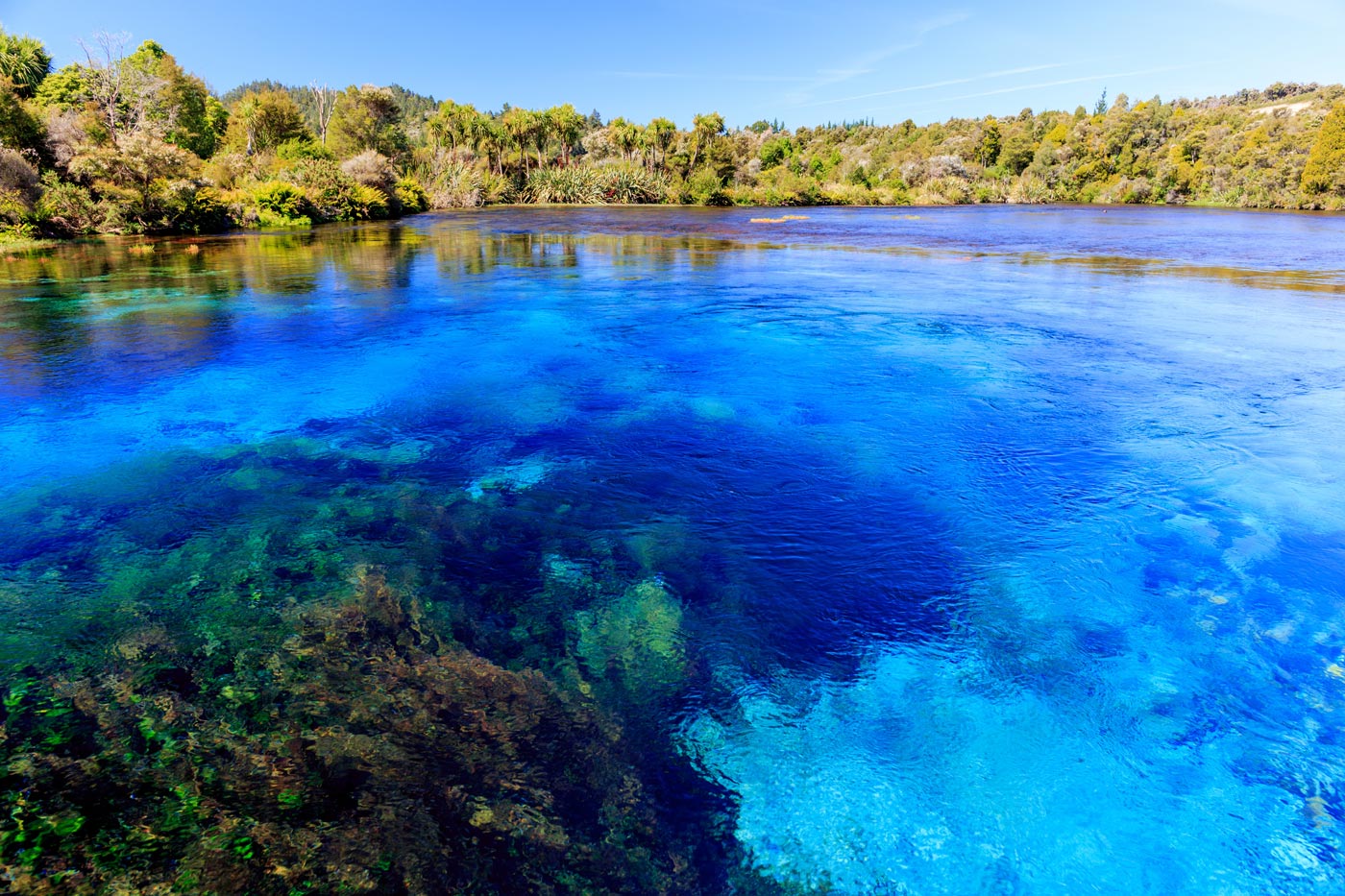
Yes, Nelson Tasman is home to extraordinary natural treasures, with its three national parks showcasing nature at its finest. But don’t overlook the city of Nelson, where you can immerse yourself in the local culture and history of this stunning region of New Zealand.
Wild, untamed, dangerous, and absolutely breathtaking. Driving along the West Coast will leave you speechless. While the weather here can often be harsh, with limited sunshine, don’t let that discourage you.
This region is home to countless stops worth exploring, glaciers that stretch toward the sea, caves illuminated by glow worms, and unique geological formations like the Pancake Rocks.
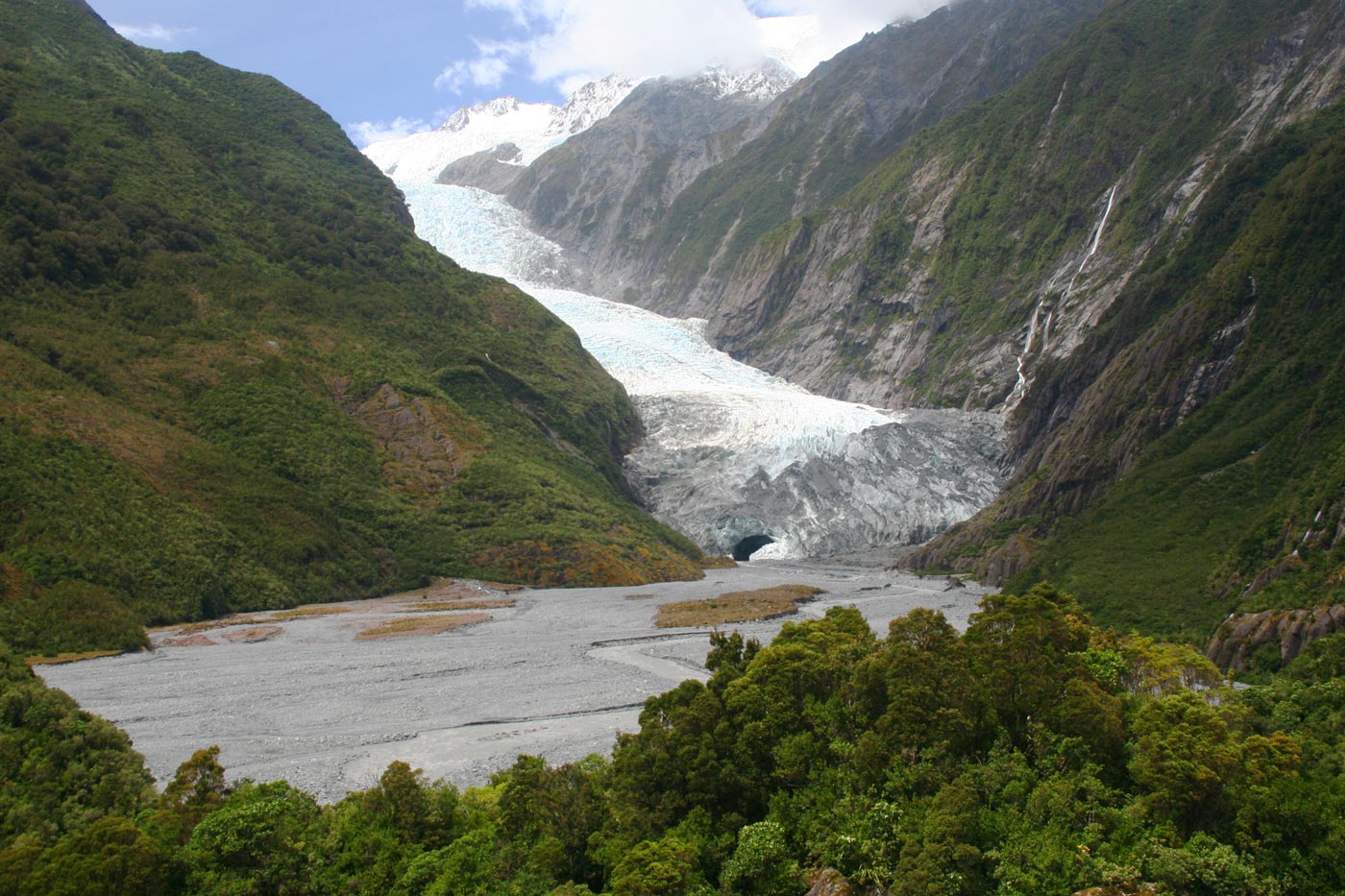
If you’re lucky and catch a sunny day, consider taking a plane to admire the glacier views from above. And if you’re feeling adventurous… why not skydive? Skydiving over Franz Josef Glacier offers the highest jump in all of Oceania. Will you dare to take the leap?
Fiordland is New Zealand’s largest national park and, in my opinion, the most spectacular. It is home to incredible natural gems, not just from New Zealand but globally, with the breathtaking Milford Sound reigning supreme.
This national park is recognized as a UNESCO World Heritage Site for good reason.
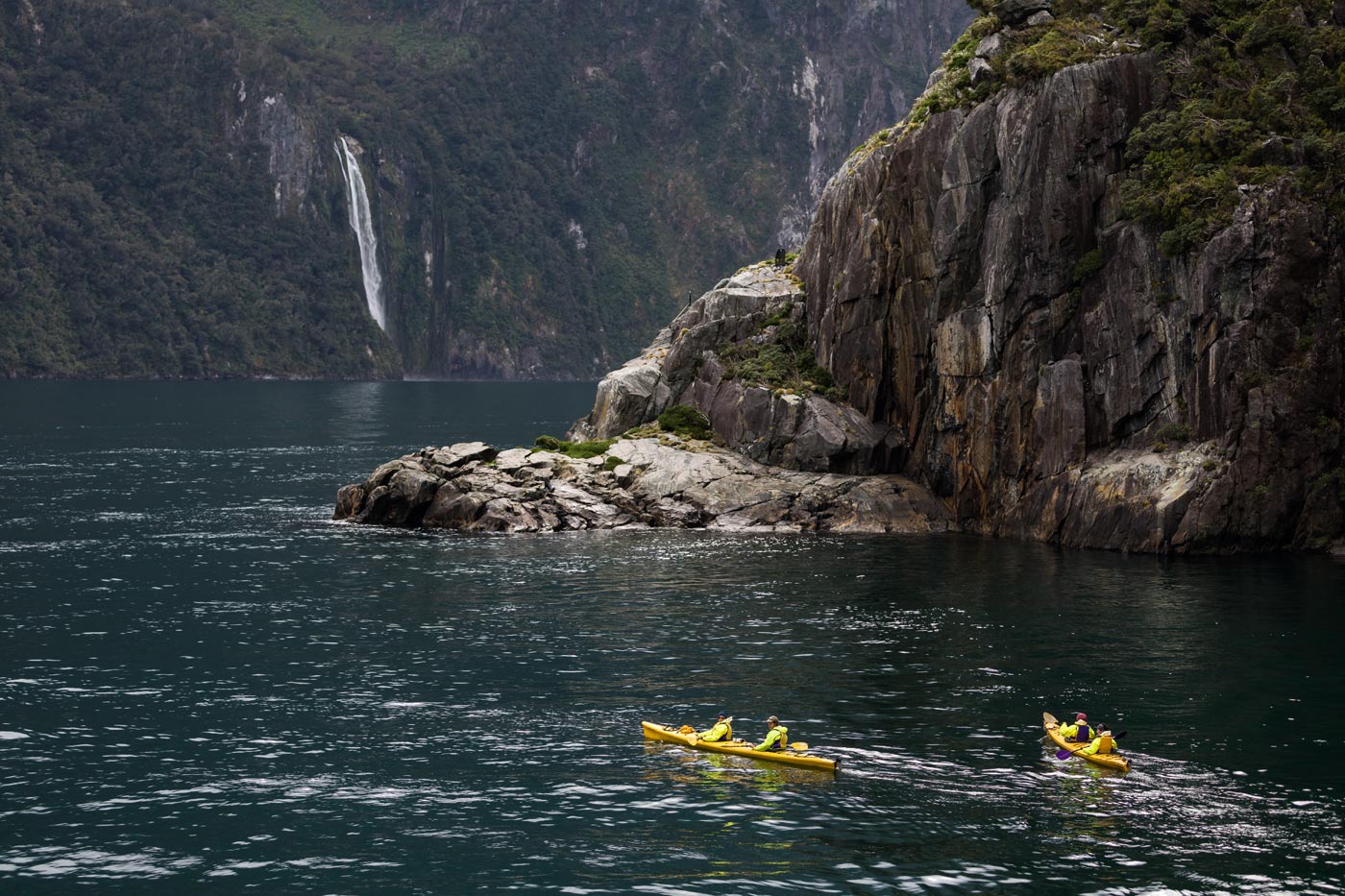
Fiordland is a haven for lovers of untouched nature and adventurous hikers. It features three of New Zealand’s famous Great Walks, making it a dream destination for trekking enthusiasts.
Don’t miss the park’s three special lakes, where you can cool off during summer or embark on scenic cruises. A cruise on Lake Manapouri will take you to unique destinations like Doubtful Sound, a place that feels otherworldly.
This national park truly has it all, doesn’t it?
The island closest to the South Pole, Stewart Island, is a must-visit for anyone looking to immerse themselves in nature for more than a week. On this island, you can spot kiwi birds during the day or climb its highest peak to enjoy panoramic views of the entire island. Tempting, isn’t it?
Prepare yourself for an adventure into untouched wilderness, where only a few dare to tread. There is just one small coastal town, and the journey? It’s 10 days without cell coverage, navigating through mud and dense bushes, fishing for your meals, and camping in remote locations or rustic hunters’ cabins. All the while, you’ll hope to stay on track and pray for a break from the rain.
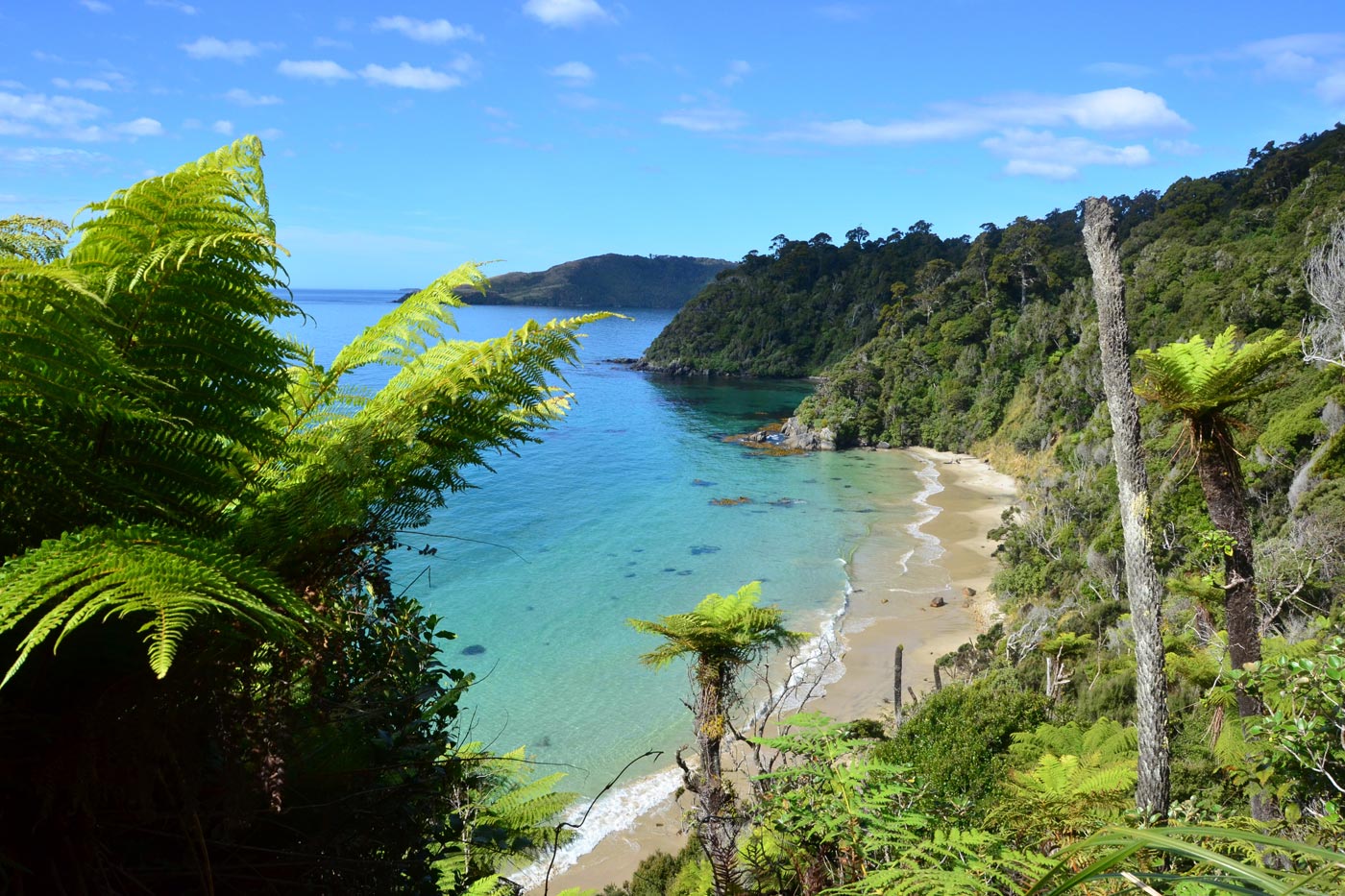
Yes, Stewart Island offers one of the most exhilarating adventures you can experience in New Zealand. The rewards go beyond the views from its peaks or its secluded beaches. This is the kind of adventure that will stay in your heart forever.
Nestled in the mountains, Queenstown is a small, rugged town well-equipped for winter with cable cars and snowploughs. Its nightlife is legendary, with parties and unique nightclubs drawing visitors from across the country.
But it’s not all about partying; Queenstown also serves as a starting point for numerous excursions. It’s renowned for its adrenaline-filled activities like bungee jumping, go-karting, and skiing.
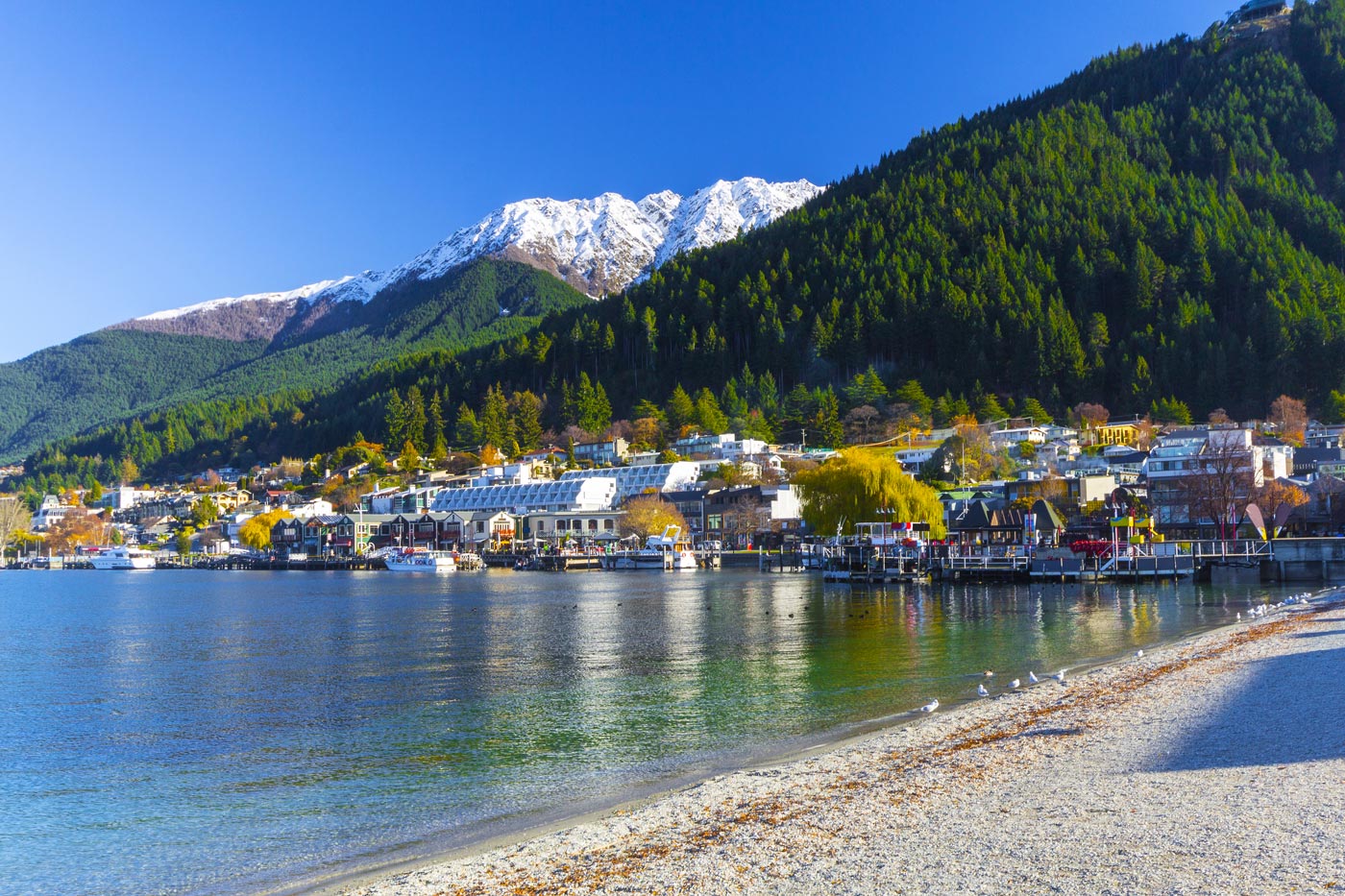
While Queenstown can be a good place to rest and resupply for a couple of days, keep in mind that prices tend to be higher than usual, especially in winter. Plan accordingly to make the most of your stay. Otherwise, it is a great place to stop and restock your supplies.
Located in the heart of the South Island, Central Otago is part of the Queenstown region. It’s one of the quietest places in New Zealand, reminiscent of the tranquil Northland, with rolling grasslands, blue lakes, and fast-flowing rivers. (Author’s note: when I say quiet, I mean you won’t be jumping out of a plane or getting lost in a jungle here!)
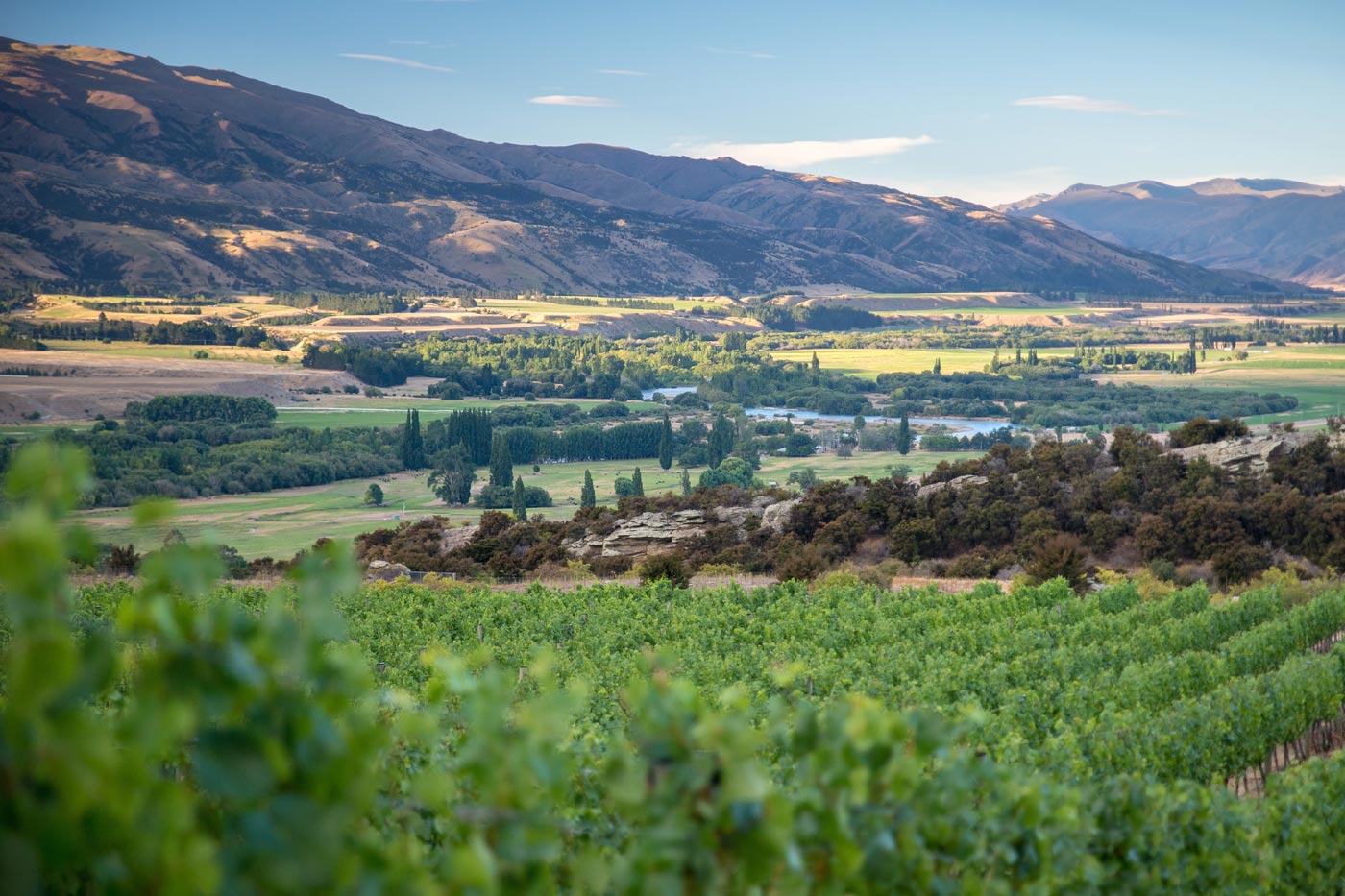
But don’t be deceived by its calm demeanor. Central Otago has plenty to offer. Its real-food ice creams are famous nationwide, Dunedin is one of the most picturesque cities I’ve ever seen, and Lake Wanaka is absolutely stunning. If you’re a fan of abandoned mines there are a couple that are easy to explore.
For all these reasons, make sure to spend at least a couple of days here and uncover the secrets this place has to offer.
The highest peak in New Zealand, Mount Cook is an essential stop on any travel itinerary. Often referred to as the “final challenge” or the “final frontier,” this majestic mountain lies within the Westland Tai Poutini National Park and holds deep cultural significance for the Māori people.
Bundle up for this adventure—the frozen lakes and enormous glaciers are breathtaking, but they also mean one thing: it’s cold!
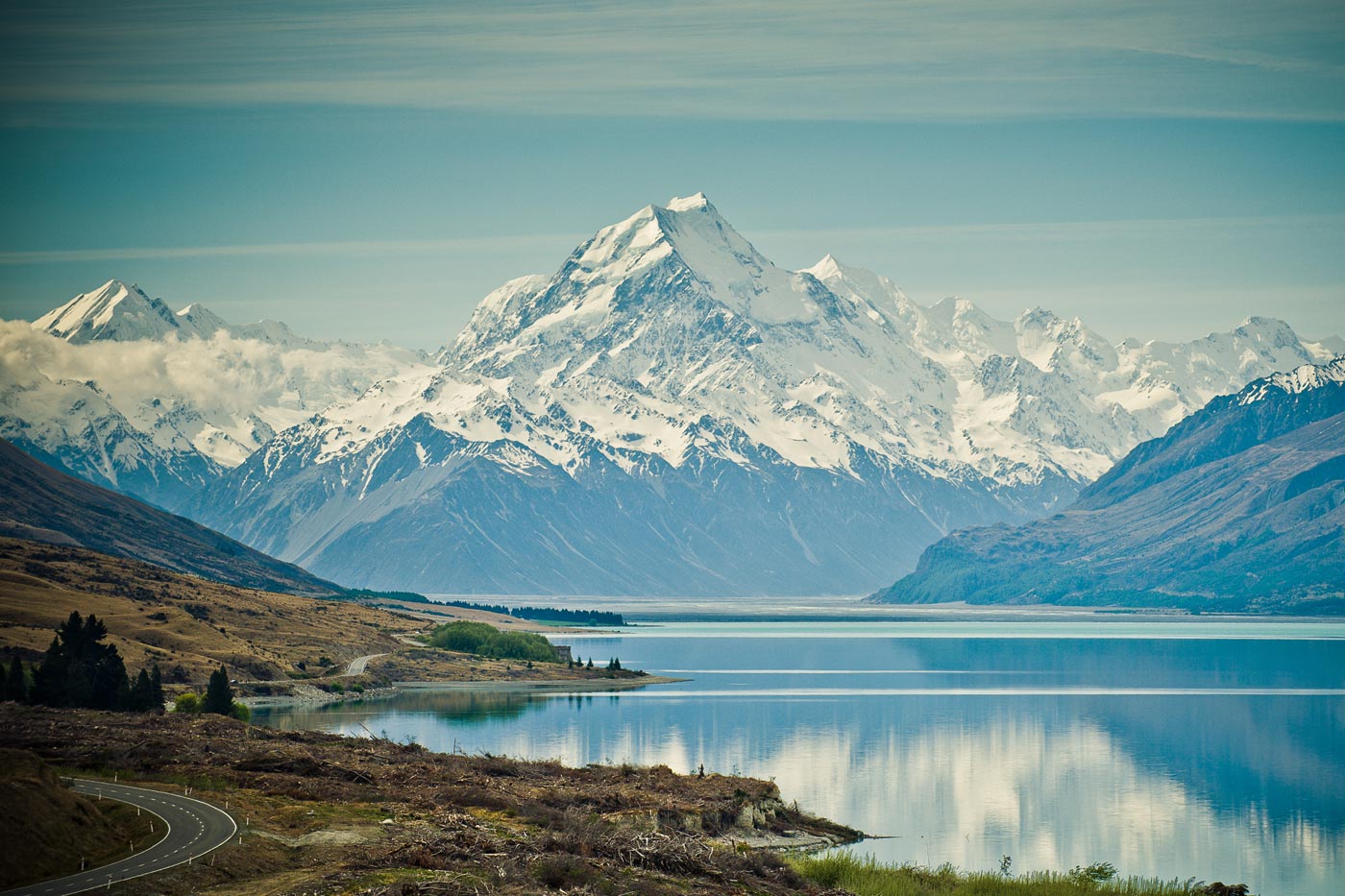
During winter, access routes may be closed due to storms, so it’s crucial to check weather conditions and road updates before heading out. You can find real-time information at metservice.com.
While you’re in the area, don’t miss Lake Coleridge and Lake Tekapo. Spending a couple of days camping by their shores or exploring the surrounding areas is an experience worth every moment.
Traveling through New Zealand and moving between islands can be quite complicated. While buses connect major cities and some smaller towns, many areas are either inaccessible or require days of waiting for the next bus.
That’s why I recommend renting either a car or a campervan. A car allows for easy mobility and is generally cheaper than a campervan. You can also bring a tent and camp at designated sites, making it a cost-effective option.
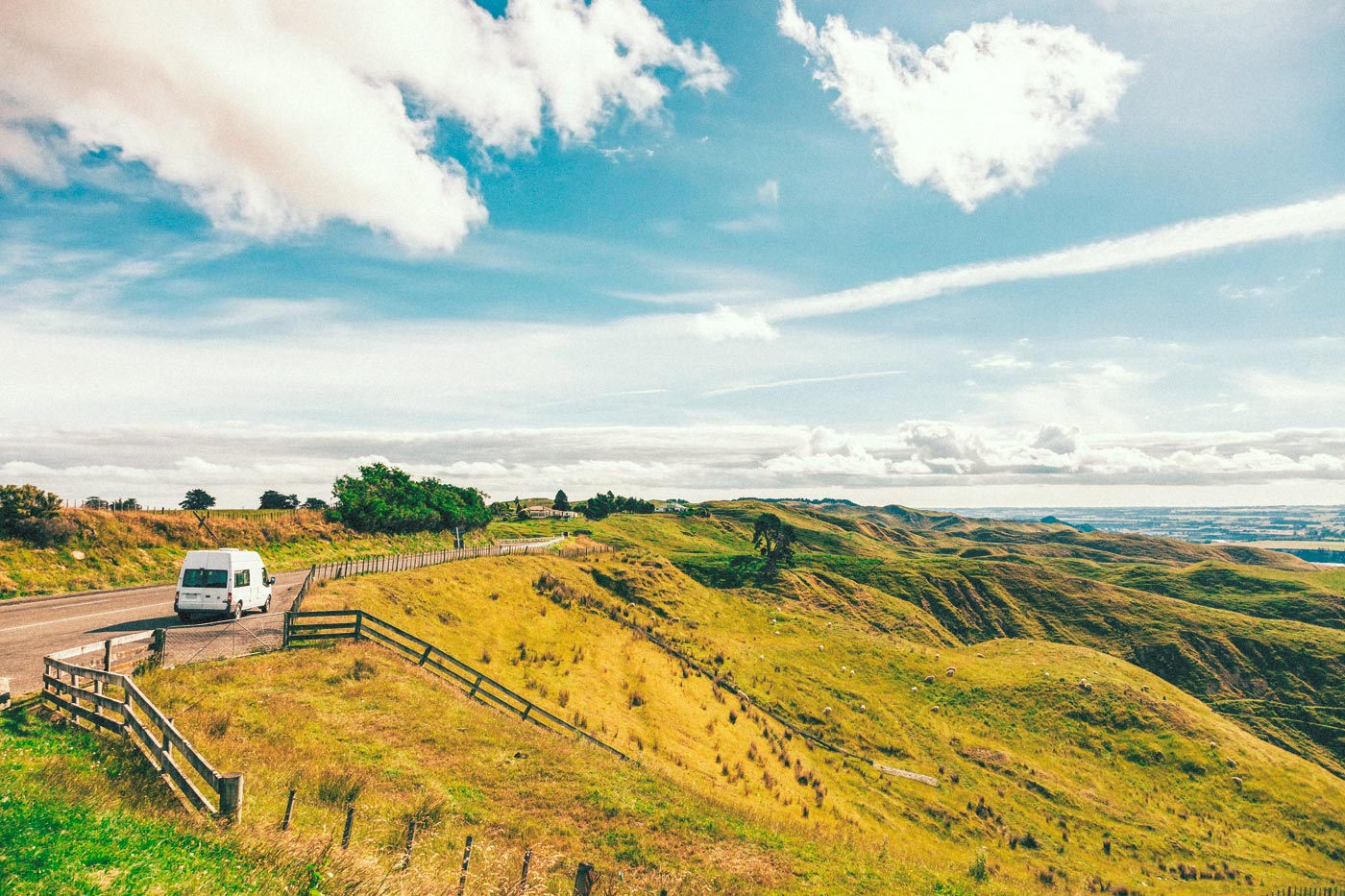
A campervan provides all the same advantages as a car, with the added benefit of having a place to sleep. There’s no need to splurge on a luxury caravan. There’s a wide variety of vans and vehicles where two people can sleep comfortably and travel light.
We’ve prepared a series of articles to help you plan the perfect campervan trip in New Zealand:
Regardless of your choice, you’ll need your passport and a translated driving license to rent a car or campervan. A quick reminder: camping or sleeping in your vehicle outside designated areas can result in fines of up to NZ$200. Forewarned is forearmed! 😛
Accommodation in New Zealand can be pricey. Cities like Wellington and Queenstown are particularly expensive, while others like Auckland tend to be more affordable. However, even Auckland can feel expensive compared to places like Spain. Hostels are an excellent option for backpackers, offering kitchens and generally friendly guests. Platforms like Booking.com or Agoda.com are great for finding accommodation.
Mi experiencia viajando a Nueva Zelanda ha sido siempre la misma. Ir de hostal en hostal hasta que me compré la “caravana” (era un Nissan Lafesta adaptado) y pude disfrutar de una gran gama de campings gratuitos. Esta es la forma ideal de viajar por Nueva Zelanda.
In addition to the wonderful Conmochilapp, which will soon include itineraries for New Zealand, here are three apps I found particularly useful during my time in the country:
Campermate: This app is hands down the best tool for traveling in New Zealand. It provides information on all essential services, including public toilets, attractions, campsites, showers, fishing spots, surfing areas, and even rubbish disposal locations. Campermate is an indispensable companion and could easily warrant its own guide!
Maps.me: An international mapping app similar to Google Maps but with the added advantage of offline functionality. It’s ideal for excursions when you’re unsure of the way, offering detailed routes even without internet access. Its GPS system is highly accurate, so you’ll always know where you are. Maps.me saved me multiple times on Stewart Island!
Metservice.com: Available as both an app and a website, this tool is invaluable for checking weather forecasts and alerts. Storms or avalanches can lead to closures in many areas, and this app helps you adapt and reorganize your plans accordingly. The last thing you want is to find yourself stranded in the middle of nowhere.
One euro is about 1.5 New Zealand dollars. Sounds great, right? Well, not really. When you realize that a night in a hostel can cost $40, a beer $6, and a kebab up to $12, your perspective might change.
The cost of living in New Zealand is higher than in Spain, so I strongly recommend renting a campervan or car. While the initial expense may seem high, it saves you money on accommodation and meals at restaurants. Gasoline costs are similar to or slightly lower than in Spain, averaging around $1.80/L (approximately €1.20/L).
Vegetarians: Easy level. Renting a campervan makes it even easier since you can cook your own meals. New Zealand offers a wide variety of high-quality, organic cheeses and eggs. Combined with an ample selection of legumes, fruits, and vegetables, it’s quite manageable. Coming from someone who was vegetarian for most of their time in New Zealand, it’s definitely a practical option.
Vegans: Intermediate level. While being vegan in New Zealand can be more challenging, it’s still doable. Organic shops are plentiful, and large supermarkets stock some vegan-friendly products, such as tofu, at reasonable prices. The hardest part is finding vegan options in restaurants, especially in more remote towns.
In my experience, I tried being vegan for a month, and it was difficult—particularly when eating out. Even nachos had cheese as a standard ingredient! Nevertheless, it’s not impossible, and with some effort and planning, you can make it work.
Exploring the underwater world is a fascinating and sometimes unsettling activity for many. Just putting on a snorkeling mask and looking beneath the water’s surface reveals a new world of colors and unknown life forms.
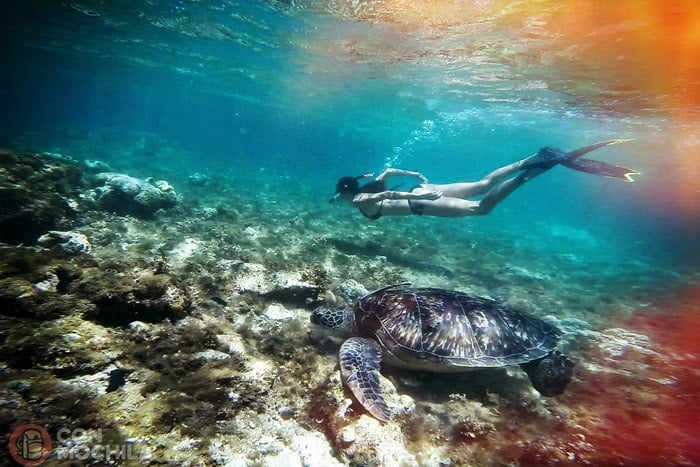
But this world needs to be cared for and respected. If you’re planning a trip that might include snorkeling and you want to ensure your presence doesn’t have a negative impact on the ecosystem, you might be interested in what’s discussed in the link above (coming soon)—what I’ve learned about responsible diving (with or without scuba gear).
Click on the image and it will take you to a new Google Maps window with all the points of interest to travel around New Zealand.